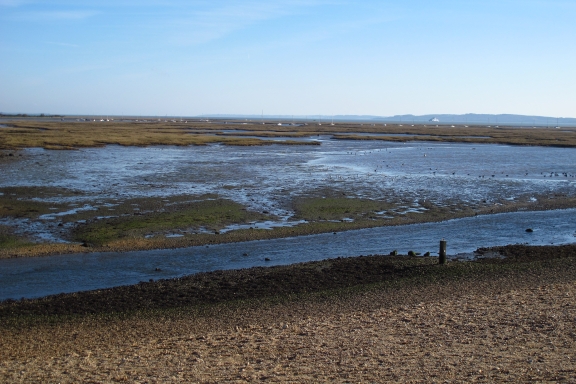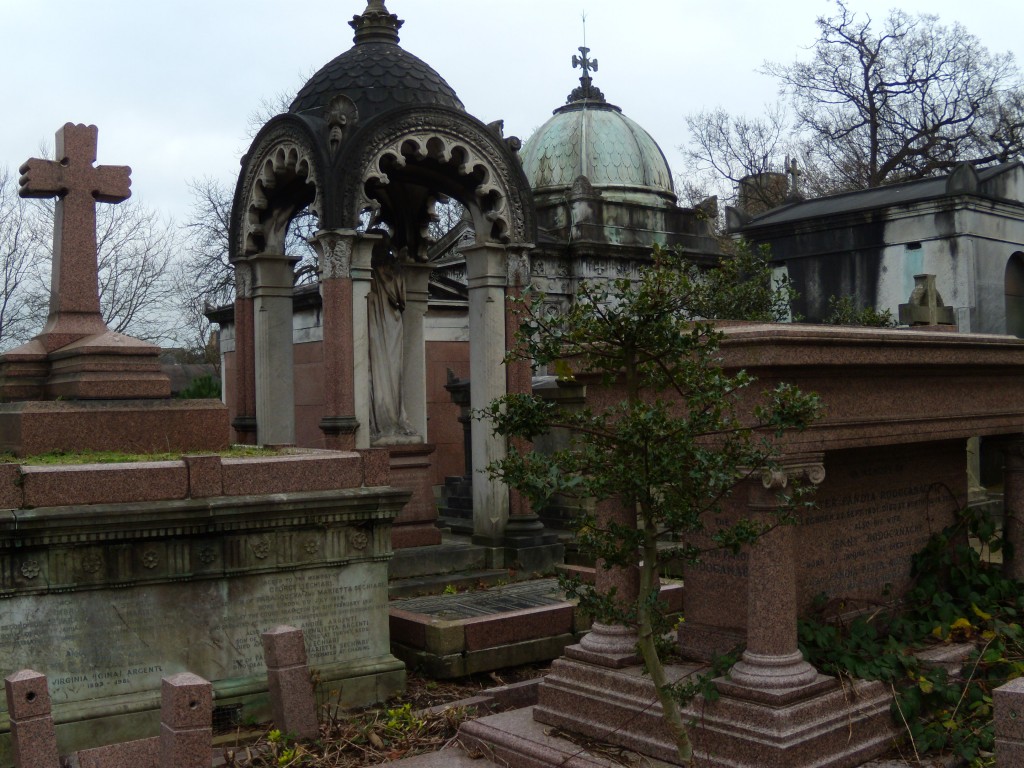Last night we watched Hanna, Joe Wright’s film from 2011. We were keen to see it when it came out but it was one of those we missed – we’ve now caught up with it on DVD. The reviews at the time were non-committal, but whilst Hanna is undoubtedly flawed (Cate Blanchett’s part is so badly scripted you’re desperate for her to be gunned down just to put an end to her wooden dialogue) what we discovered was an odd, highly imaginative little movie with some wonderfully surreal moments, striking imagery and a great soundtrack by the Chemical Brothers. I loved seeing it, and it left me feeling aggrieved for Joe Wright that his first two features – the predictably lavish and entirely unchallenging costume dramas beloved of habitual non-cinema-goers, Pride and Prejudice and Atonement – were so rapturously received, while his next three films – The Soloist, Hanna and this year’s Anna Karenina – have met with indifference and a vague bewilderment. The variety and weirdness on display in his more recent work gives us ample indication that Wright wants to do a great deal more as a director than pump out repeat performances of the kind of heritage cinema that launched his career – and yet it would seem that some reviewers at least would feel happier with him if he stayed in the box he was originally allocated. This, as they say, makes me mad.
I love Tolstoy’s Anna Karenina. It was my great introduction to Russian literature and I’ve read it three times. I’d be content to see it (perhaps along with Pasternak’s Doctor Zhivago) awarded the title of Best Novel of All Time. Most attempts to film Anna Karenina have concentrated on period detail, on recreating, as accurately as possible given the time restrictions, what actually appears on the page. Such attempts have met with varying success, but given the scope of the novel and the mountain of narrative material to be climbed it’s perhaps inevitable that most of them were doomed. You can enjoy them as entertainment – in much the same way you can enjoy David Lean’s approximation of Doctor Zhivago – but they don’t add a thing to the novel. How could they, when all they’re doing is trying to ape a novelistic language, rather than approaching Tolstoy’s work from a fresh angle, in terms of cinema?
Joe Wright’s Anna Karenina, filmed in a mock-up of a nineteenth century theatre, all swagged red velvet and gilt trim, is a satirization of lavishness. It plays around with the idea of being a stage play, and yet the filmic devices Wright employs – the apparent transposition of the action inside a toy theatre, the use of a model railway layout to portray Anna and Vronsky’s journey from Petersburg to Moscow – could only be achieved through the medium of cinema. As such they pass beyond gimmickry to illumination, augmenting our understanding of the novel from a twenty-first century perspective. Rather than being heritage cinema, Wright’s Anna is a modern work of art. Can it be that which upset the purists? Whatever the reason for this film’s lukewarm reception, it pisses me off. Cinema, like all art, thrives on risk, and the willingness to take risks, as Wright has done, is infinitely more praiseworthy than the lush repetition of some perfectly executed Hollywood Tolstoy-by-numbers.
Anna Karenina turned out to be one of my favourite films of 2012: a surprise and an inspiration and a delight. Other favourites include Todd Solondz’s Dark Horse, Jean-Marc Vallee’s Cafe de Flore, Miguel Gomes’s Tabu, Ben Wheatley’s Sightseers. These are all what I’d call hole-in-the-wall movies, the kind that get only a limited theatrical release and rarely crop up in awards nominations. You won’t find them on view at your local multiplex, yet they’re undersold on the arthouse circuit also. They’re those peculiar little films that no one seems to know what to do with and I love them, even when, or especially when, they’re not perfect.
(Disclaimer: I haven’t seen The Master yet, but we’re going next week. I loved Woody Allen’s To Rome, With Love, even though it’s not ‘good’ Woody Allen, apparently, but then I’ve loved everything he’s done apart from Whatever Works – and yes, that includes the London movies. Also I totally adored William Friedkin’s Killer Joe. So shoot me down.)
The year in books was dominated for me by two titles, M. John Harrison’s Empty Space, and Keith Ridgway’s Hawthorn & Child. You might easily draw comparison between these two – Keith Ridgway tackles the crime novel in a manner reminiscent of the way Mike Harrison tackles the science fiction novel, an approach composed of pretty much equal parts love and resentment – but that wouldn’t be the point. Both these books are astoundingly well written, punch-to-the-gut well written in fact. Both do fascinating things with form, both offer an honest confrontation of contemporary reality. Above and beyond that, both these novels are meant, both give you the sense that the writer staked his integrity on them, not to say his sanity. Both feel like essential reading, in a way that too few contemporary novels are willing to risk. There – we’re back with risk again. A real novel, surely, should entail some.
If Empty Space and Hawthorn & Child tie for gold, my worthy runner up would have to be Sam Thompson’s Communion Town, a first outing so accomplished it raises the bar a notch higher for anyone and everyone behind Thompson in the debut queue. I really loved this book. What’s more, I was excited by it – not just because of the risks it takes with form and with genre but also because of the compelling mystery of its storytelling and the rapturous beauty of its language. Communion Town made the Booker longlist and should have gone further. Still, there’s plenty of time for Sam Thompson, who clearly means business.
The other books on my personal year’s best list weren’t written or even published this year – 2012 just happened to be the year in which I read them. Nicola Barker’s Clear was a total joy – I honestly can’t go far enough in stating my admiration for this writer and what she’s doing. Barker has often talked about how much she feels compelled to take risks, both in her subject matter and the form of her narratives, and it is a testament to her skill as a storyteller that for the reader these risks are rendered invisible by the runaway pleasure one always finds in reading her. (I mean, Barker’s Behindlings or Self’s Umbrella – which would you rather read..?) In 2013 I plan to read The Yips – already purchased – and to finally catch up with Wide Open, the novel that won Barker the Impac Award and that I’ve been meaning to get to for ages.
Helen Oyeyemi’s White is for Witching took my breath away. A small novel, but perfectly formed. and without a doubt the best ghost story I’ve read in years. Why it was largely overlooked by the various awards judges – both mainstream and genre – is a complete mystery. Roberto Bolano’s The Third Reich was another book I came away from wishing I’d written it. And continuing in the military vein, 2012 was the year I finally got around to reading Ford Madox Ford’s The Good Soldier. I’ve heard so many people rate this book as their ‘desert island’ novel, an indispensable classic that made them look at narrative in a whole new way. I was a tad sceptical, to be honest – but wow this was a great read! The Good Soldier is buttoned up to the point of claustrophobia, understated to the point of being repressed – but still it seethes with tension and enmity and hidden meanings; unshowy yet flawlessly elegant in its use of language, it’s a genuine page-turner and I found myself joining the ranks of those who couldn’t put it down.
The book that has proved the most practical inspiration to me this year was Stephen King’s The Gunslinger. When I read it I burned with envy, simple as that. Here’s a novel that made me stop what I was doing and think again, a tautly composed, one-of-a-kind book that is a masterclass in storytelling as well as a showcase for some of King’s best writing. What King demonstrates most of all in The Gunslinger is that style and substance can and should be equal partners. Grasping this – indeed I think I shold say finding the courage to grasp this – is reshaping me as a writer, I hope for the better.
Of course there there were some low points: Karen Thompson Walker’s The Age of Miracles (trying to ‘do’ SF but failing from a great height with a lingering waaaaa sound), Benjamin Wood’s The Bellwether Revivals (a too-shallow exploration of a fine idea), Ali Shaw’s The Man Who Rained (a weak recapitulation of his brilliant first novel The Girl with Glass Feet) to name but three. But when it comes to reading and writing, nothing is wasted. I find that even the books that don’t work for me teach me something, and asking myself precisely why I’m angry with a book can often be as instructive as setting down my reasons for loving a text.
As for next year’s reading resolutions, what I wish for myself more than anything is some structure, the self discipline to stop dotting around all over the place and engage in some serious and constructive ‘project’ reading. (OK, so this is just another excuse for me to make lists of things, fair cop.) As well as completing Stephen King’s Dark Tower series. I also have vague plans to read the whole of Joyce Carol Oates’s ‘gothic’ sequence – with the fifth and last novel due out in March, I can’t think of a better time to embark on that particular voyage, especially given that I could read JCO all year long and not get tired of her. I’d like to catch up with some contemporary crime novels (everyone was all over Gillian Flynn’s Gone Girl, for example) and I can always make time for more literature in translation – Bernardo Carvalho’s Nine Nights is already on my reading list. Then of course there’ll be the excitement of a whole new Clarke Award shortlist – I can barely wait!
But the best thing about a new year’s reading is the newness of it, not having a clue what your best discoveries will be. And there’s always that hope, reiterated every year, that you’ll stumble upon a book that will change your whole outlook, that kind of talismanic text that fills you with a new urgency, that reminds you of what you’re supposed to be doing and equips you – if you pay attention – to do it better. That’s what I’m looking forward to in 2013.
Happy New Year!




